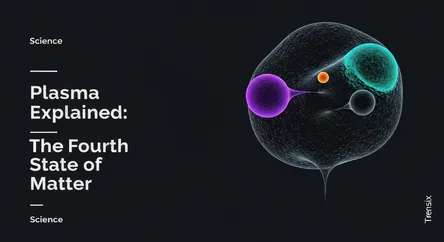Science
Plasma Explained: The Fourth State of Matter

Discover plasma, the supercharged fourth state of matter. Learn how this ionized gas powers stars and drives cutting-edge technology on Earth.
What is it?
Plasma is often called the fourth state of matter, alongside solids, liquids, and gases. It is an ionized gas, meaning it's a superheated substance where atoms have been stripped of their electrons, creating a mix of charged ions and free-moving electrons. This gives plasma unique electrical properties, allowing it to conduct electricity and respond strongly to magnetic fields. While less common on Earth, plasma is the most abundant state of matter in the universe, composing over 99% of visible matter. Stars, including our Sun, are giant balls of glowing plasma, and it's also found in lightning, auroras, and nebulae.
Why is it trending?
Plasma is trending due to its central role in groundbreaking scientific and technological advancements. Researchers are intensely focused on harnessing plasma for nuclear fusion, a process that mimics the Sun to create clean, virtually limitless energy. Projects like the ITER tokamak are pushing the boundaries of plasma physics. Furthermore, plasma technology is critical in the semiconductor industry for etching the microscopic circuits on computer chips. Its applications are also expanding in medicine for sterilizing equipment and even in experimental cancer treatments, keeping it at the forefront of innovation.
How does it affect people?
Plasma impacts daily life in more ways than many realize. It's the technology behind plasma TVs, neon signs, and powerful plasma torches used for industrial cutting and welding. The quest for fusion energy, driven by plasma research, holds the potential to solve future energy crises. On a grander scale, understanding plasma is key to understanding our universe, from solar flares that can disrupt satellite communications to the fundamental processes that govern stars and galaxies. Its continued study fuels technological progress, from the devices in our pockets to our hopes for a sustainable future.